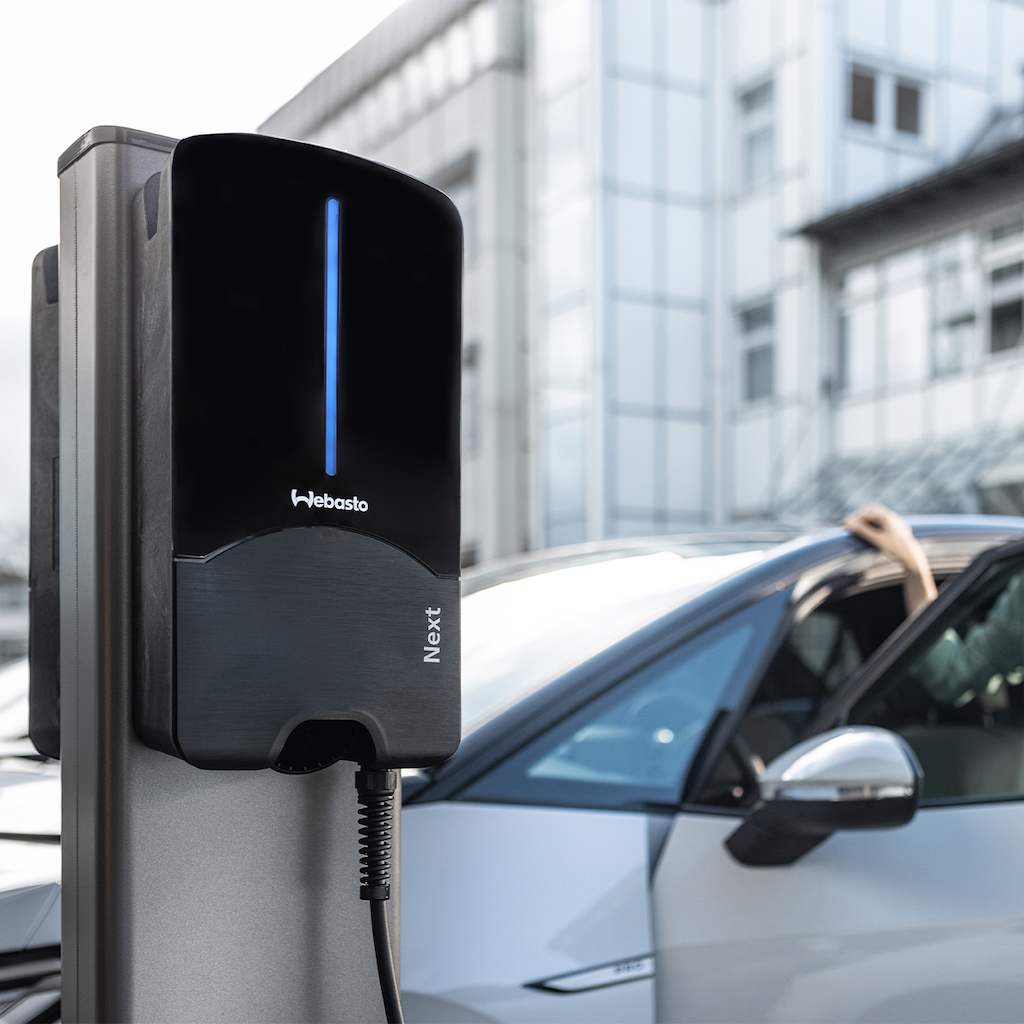Legislation regarding the mandatory installation of electric vehicle (EV) chargers in new homes is expected to become mandatory this year. But what will housebuilders and property developers be expected to do, and how will they achieve it? Sam Rawson, Sales Manager Charging, Webasto, summarises the pertinent points for consideration.
For housebuilders, property developers, or indeed those renovating a property, the new regulatory framework will have a significant impact on the building that is delivered.
Whilst no commencement date has been published (at time of this issue being printed), the UK Government has decided that ‘there will be an adjustment period of no less than six months from the date of the laying of the regulations in parliament and the regulations coming into force’. This will give adequate time to ensure a robust charging policy is in place to meet the requirements which are:
- Every new home, including those created from a change of use, with associated parking within the site boundary to have an electric vehicle charge point
- Residential buildings undergoing major renovation, which will have more than 10 parking spaces within the site boundary after the renovation is complete, are to have at least one electric vehicle charge point for each dwelling with associated parking within the site boundary and cable routes in all spaces without charge points
- All new non-residential buildings, with more than 10 parking spaces within the site boundary of the building, to have a minimum of one charge point and in addition to this, cable routes for one in five of the total number of spaces
- All non-residential buildings, undergoing a major renovation, which will have more than 10 parking spaces within the site boundary after the renovation is complete, to have a minimum of one charge point and in addition to this, cable routes for one in five spaces.
Properties that have their initial building notices or full plan submitted in this period (no less than six months from the date of the laying of regulations in parliament) must begin building work by no later than 12 months after the coming into force date, otherwise the new regulations will need to be met.
There will be a period of adjustment and exemptions to the Building Regulations which states:
- A period will be put in place between the laying and coming into force of the regulations, during which properties which have their initial building notices or full plans deposited will not be legally required to meet the regulations.
The one exemption for new residential buildings states:
- New residential buildings where the installation of charge points would increase grid connection costs by more than £3,600 per charge point.
With the number of pure EV vehicles on the nation’s roads growing daily, it was clear that a strategy was required to support at home charging. With over 80% of charging currently taking place at home, it was evident that this change to legislation held the key to a successful integration of EVs into the lifestyles of the people in the UK.
So how will developers integrate the EV charging infrastructure into their plans and build schedules?
Making it happen
Firstly, it is worth pointing out that the Government is ‘confident that the grid will be able to cope with the increased demand for electric vehicles,’ however, there are steps that developers can take to reinforce this and provide an extra level of security.
- By installing smart chargers, electricity usage is managed effectively. Once the vehicle is fully charged the charger stops drawing electricity, and the vehicle charges when demand on the grid is at its lowest.
- Consider agile solutions to support this such as introducing battery storage on housing sites, or load management systems which allow the chargers to ‘talk’ to each other giving an even supply.
It’s basically about putting in what’s needed now, but also future proofing the system. For example, in a non-residential building (with more than 10 parking spaces in the site boundary) not only is it stated that at least one charge point should be installed, but that cable routes for one in five of the total number of spaces should also be installed to future proof network requirements.

What you need to consider
When developing an EV infrastructure for a development the following should be considered:
- Connection location for each parking space – this should be suitable for EVs with different charging inlet locations. In many cases the optimum position for a future connection location will be at one corner of the parking space
- Ensure that that the charge point is accessible and ensure access for disabled users is also possible
- Ensure charge point standards BS 7671 are met
- Choose charge points from a reputable manufacturer that meet the following technical requirements; Designed and installed in accordance with appropriate parts BS EN 61851; minimum rated output of 7kW; have charging status indicator; a minimum of Mode 3 or equivalent
- Consider how best to provide the charging facility for multi-occupancy dwellings to ensure it is accessible, that the facility can be accessed by all residents and that a fair charging payment system is installed.
- Speak directly with EV manufacturers, not all electrical contractors will be able to advise on charge point outputs and options
With final amends to Building Regulations and updates to the Approve Documents B (Fire Safety), M
(Access to and Use of Buildings) and P (Electrical Safety) expected soon, final clarity will be achieved to ensure all parties can work together to achieve the forthcoming legal requirements.
Checklist
Webasto has put together a handy 4A checklist to summarise the key points to consider when including EV charging in your development plans:
- Analysis – Understanding individual site requirements for EV charging units right through to customer usability
- Assessment – Current contractors, do they require training or do you need to sub-contract EV fitting to specialists?
- Application – The installation process, how to implement into your build plan
- Attention – After care, support for customers whenever they begin their EV journey











